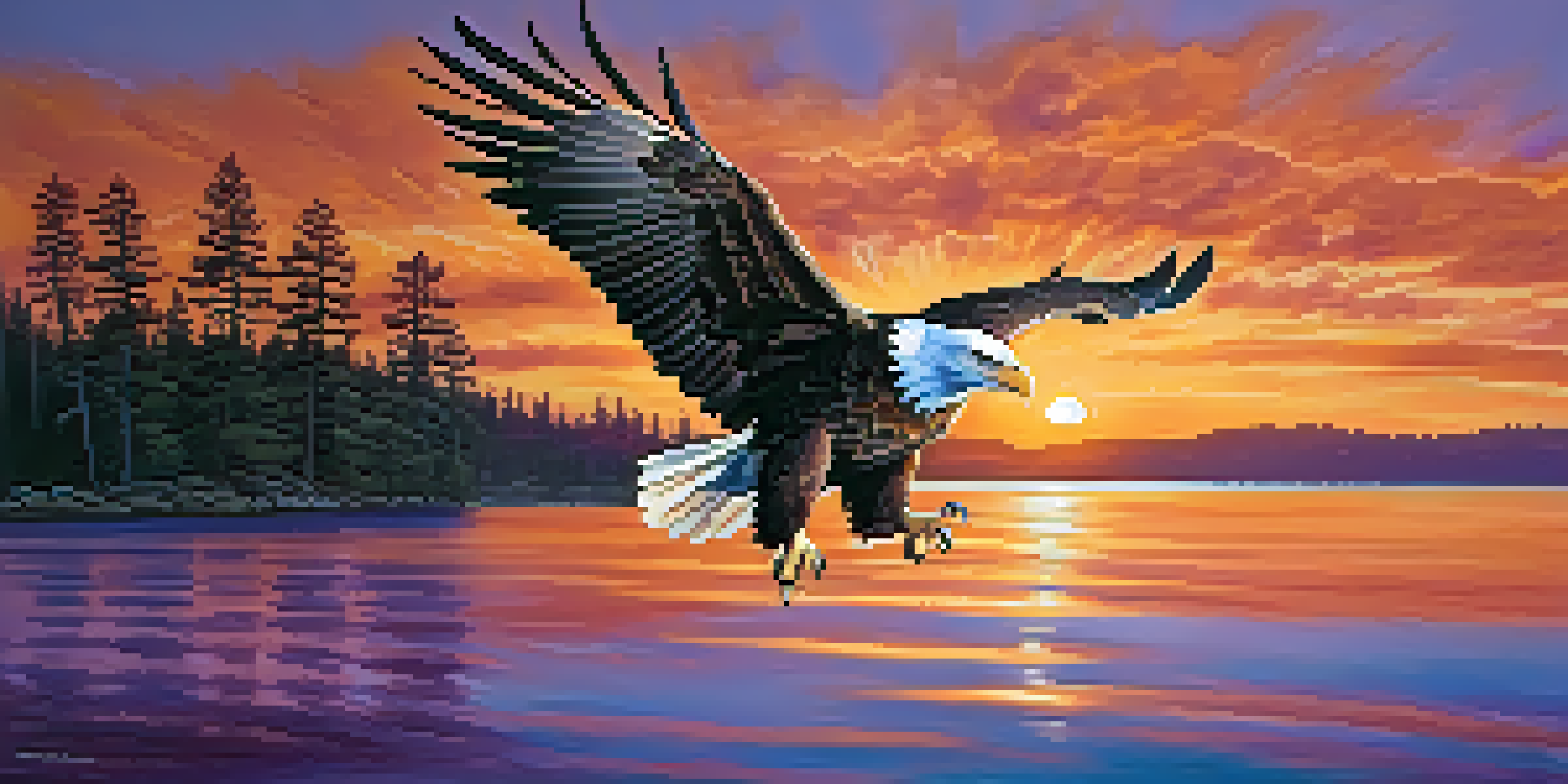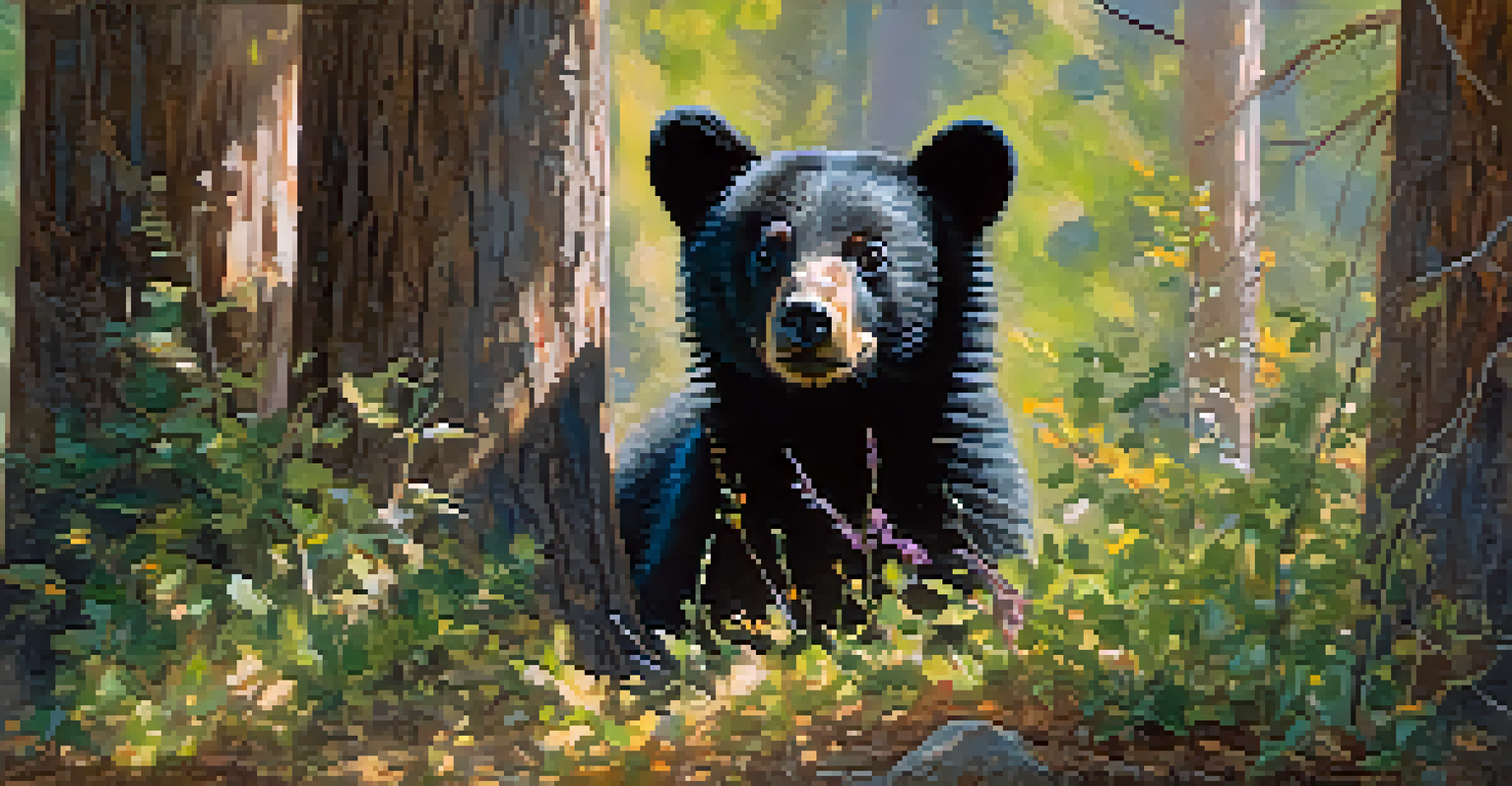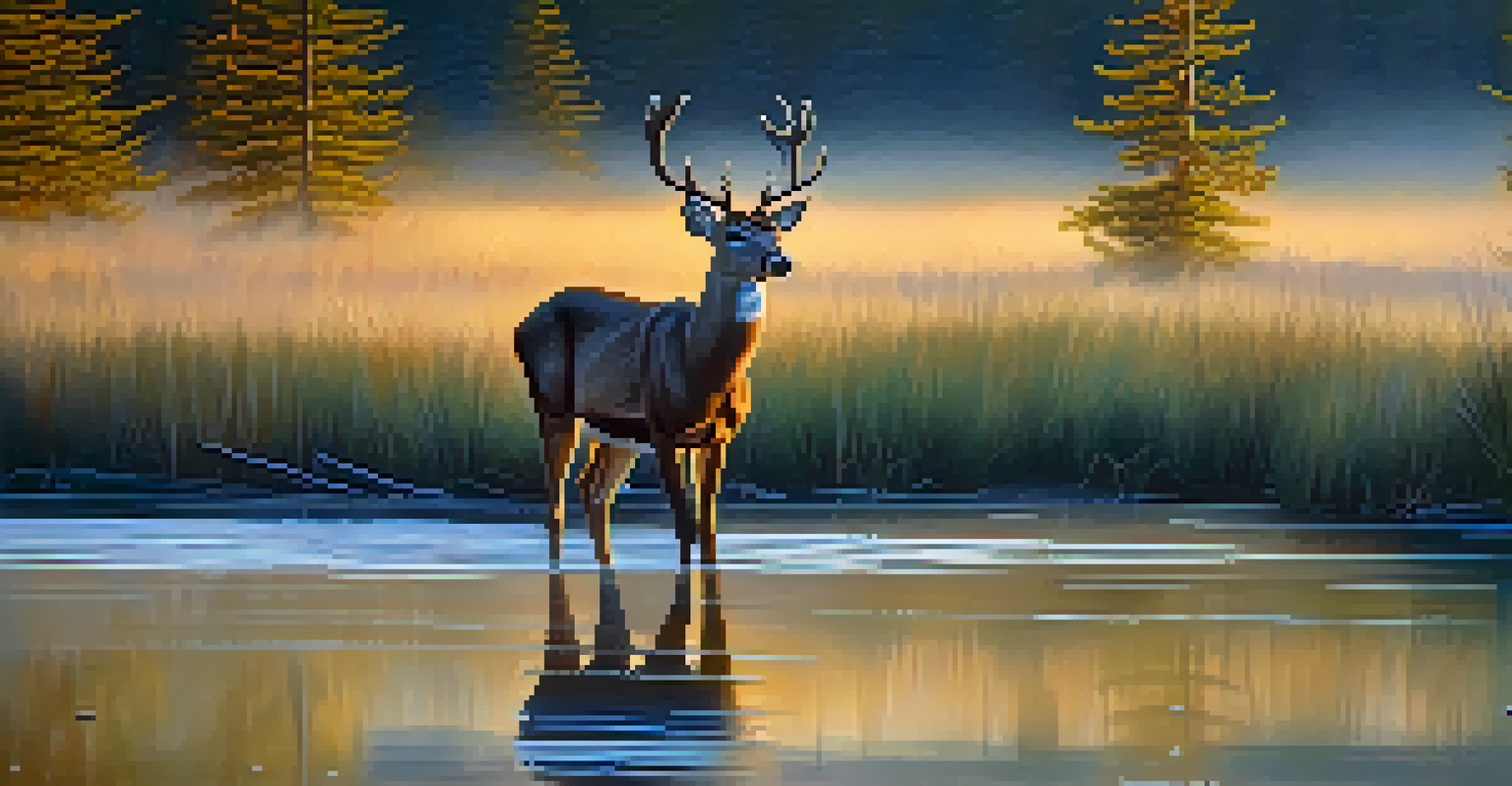Wildlife Photography in Big Bear: What You Need to Know

Understanding Big Bear's Unique Wildlife
Big Bear Lake is a treasure trove of wildlife, making it a photographer's paradise. From majestic bald eagles soaring overhead to playful black bears wandering the forests, there’s no shortage of subjects to capture. The diverse ecosystems here support a variety of species, each with its own behavior and habitat preferences. Understanding these animals and their patterns can greatly enhance your chances of getting that perfect shot.
In every walk with nature, one receives far more than he seeks.
For instance, knowing that deer are most active during dawn and dusk can help you plan your outings. Additionally, the changing seasons offer different wildlife opportunities; spring brings baby animals, while fall showcases vibrant foliage alongside foraging creatures. By aligning your photography schedule with these natural rhythms, you'll find yourself in the right place at the right time.
So, before you grab your camera, take some time to research the wildlife you hope to photograph. Familiarizing yourself with their habits and habitats not only boosts your chances of success but also deepens your appreciation for the natural world.
Essential Gear for Wildlife Photography
When it comes to wildlife photography, having the right gear can make all the difference. A quality camera with a good zoom lens is crucial, as it allows you to capture details from a distance without disturbing the animals. Ideally, a DSLR or mirrorless camera paired with a lens that ranges from 200mm to 600mm will give you the versatility you need to shoot various subjects in different settings.

Consider investing in a sturdy tripod or monopod, especially for those early morning or late evening shoots. This equipment helps stabilize your camera, resulting in sharper images, which is essential for capturing fast-moving wildlife. Additionally, don’t forget extra batteries and memory cards; wildlife can be unpredictable, and you don’t want to miss a moment because you ran out of power or storage.
Know Wildlife for Better Photography
Understanding animal behavior and seasonal changes enhances your chances of capturing stunning wildlife images.
Lastly, protect your gear with weather-resistant bags or cases, as Big Bear's environment can be unpredictable. Whether it’s a sudden rain shower or a dusty trail, safeguarding your equipment ensures that you can focus on capturing breathtaking images without worry.
Best Locations for Wildlife Photography in Big Bear
Big Bear is dotted with several prime spots for wildlife photography, each offering unique experiences. One of the most popular locations is the Big Bear Lake itself, where you can find various birds, including ospreys and ducks, as they fish and frolic along the shore. The lake’s surrounding areas are also frequented by deer, especially during early mornings.
Photography is the story I fail to put into words.
Another fantastic spot is the San Bernardino National Forest, which boasts diverse habitats ranging from dense woodlands to open meadows. Here, you can encounter everything from squirrels to bears, depending on the time of year. Take a hike on one of the many trails, and keep your camera ready; you never know what wildlife might cross your path.
Lastly, don’t overlook the Big Bear Discovery Center, where you can learn more about the local fauna and get tips from park rangers. They can provide valuable insights into the best times and locations to spot specific animals, making your photography adventure even more rewarding.
Respecting Wildlife: Ethical Photography Practices
As a wildlife photographer, it’s crucial to prioritize ethical practices that respect the animals and their habitats. Always maintain a safe distance from wildlife to avoid causing them stress or altering their natural behaviors. Using a zoom lens allows you to capture stunning images without intruding on their space.
Additionally, avoid feeding or attempting to interact with wild animals. This not only disrupts their natural foraging habits but can also pose risks to both you and the animals. Remember, the goal is to document their beauty in a way that honors their existence, not to manipulate their behavior for a better shot.
Essential Gear for Success
Investing in quality equipment, like a zoom lens and sturdy tripod, is crucial for effective wildlife photography.
Lastly, adhere to local regulations and guidelines regarding wildlife photography. Many parks and nature reserves have specific rules designed to protect both the wildlife and the environment, so make sure to familiarize yourself with these regulations before heading out.
Timing Is Everything: Best Seasons for Wildlife Photography
In Big Bear, each season presents unique opportunities for wildlife photography, so timing your visits wisely can lead to remarkable results. Spring is often a favorite among photographers, as it brings new life with baby animals and vibrant flowers. This is the perfect time to capture the tender moments of nature awakening after winter's slumber.
Summer, while warmer, offers lush landscapes and increased animal activity. Many species are busy foraging and raising their young, providing ample opportunities for dynamic shots. However, be mindful of the heat and stay hydrated, as you'll likely be spending extended hours outdoors.
Fall, with its stunning foliage, not only provides a beautiful backdrop but also a bustling wildlife scene as animals prepare for winter. Bears become more active, gathering food, and migratory birds may be spotted as they pass through. Tailoring your visits to coincide with these seasonal changes will help you capture the rich tapestry of life in Big Bear.
Techniques for Capturing Stunning Wildlife Images
To truly capture the essence of wildlife, employing specific photography techniques can enhance your images significantly. One fundamental approach is to use the rule of thirds for composition, which involves dividing your frame into thirds both horizontally and vertically. Positioning your subject along these lines or at their intersections can create a more balanced and engaging photograph.
Additionally, mastering your camera settings is vital. Use a fast shutter speed to freeze motion, especially with animals in action. Adjusting your ISO settings can also help in low-light situations, allowing you to maintain clarity without introducing blur.
Practice Ethical Photography
Respecting wildlife and their habitats through ethical practices is vital for responsible photography.
Lastly, always be patient and observant. Wildlife photography often requires waiting for the right moment, so find a comfortable spot, blend into your surroundings, and let the animals come to you. The more time you spend quietly observing, the more likely you are to capture those unforgettable moments in nature.
Post-Processing Tips for Wildlife Photographers
Once you've captured stunning wildlife images, the next step is post-processing. This stage is essential for enhancing your photos and bringing out their true beauty. Start by using editing software like Adobe Lightroom or Photoshop, where you can adjust exposure, contrast, and color balance to make your images pop.
Cropping can also be beneficial, helping to eliminate distractions from the edges of your photos and focusing attention on the subject. However, be careful not to overdo it; maintaining a natural look is key. You can also experiment with sharpening tools to enhance the details in your wildlife shots, ensuring that fur, feathers, and other textures are crisp.

Lastly, consider sharing your final images on social media platforms or photography forums. Not only does this showcase your work, but you can also connect with other wildlife enthusiasts who may provide valuable feedback and support as you continue to develop your skills.